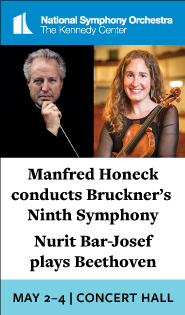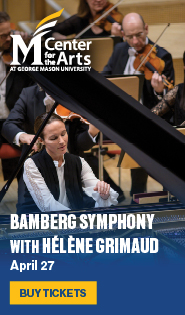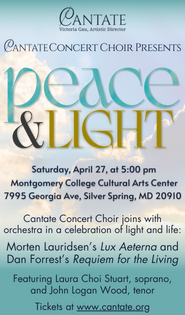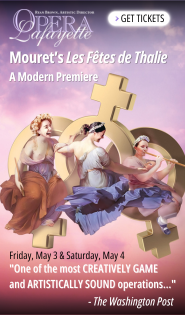Alsop and BSO prep for Proms with American-Russian program

Marin Alsop conducted the Baltimore Symphony Orchestra Saturday night at Strathmore in music of Bernstein, Gershwin and Shostakovich.
The Baltimore Symphony Orchestra is going on a British tour, its first international trip since 2005. Last week Marin Alsop tried out the program the BSO will perform at the Edinburgh International Festival. On Saturday in the Music Center at Strathmore the orchestra offered the program it will perform in its appearance at the Proms later in the tour.
All signs continued to be positive that the BSO will cut a handsome figure in the Old World. The musicians even sported new concert outfits, “active formalwear” that is the result of a years-long project in collaboration with Parsons The New School of Design.
In addition to Gershwin’s Concerto in F, heard last week, the tour features a major dose of Americana with an all-Bernstein program, performed here last month with violinist Nicola Benedetti.
The tribute to the American composer’s centenary continued in this Proms program, which opened with Slava! A Political Overture, the peppy, derivative burst of energy Bernstein composed for Mstislav Rostropovich, known by the nickname Slava, as he took his post as music director of the National Symphony Orchestra in 1977.
The piece is an air-headed pastiche lampooning Washington’s hot-air politics, sewn together from scraps of Bernstein’s musical 1600 Pennsylvania Avenue and a quotation from Mussorgsky’s Boris Godunov. Alsop and the BSO gave it all the madcap energy they could, with an especially fine soprano saxophone solo and suitably dirty wah-wah trumpet and trombone complaints. The recording of hackneyed political speeches, featuring the voices of Bernstein and others, seemed positively quaint in the fraught political atmosphere of today’s America.
On the tour Jean-Yves Thibaudet will take the piano solo part in Bernstein’s Second Symphony, based on W.H. Auden’s poem The Age of Anxiety. Jon Kimura Parker did the honors in this concert.
The Canadian pianist was careful of touch in the melancholy opening solo passage and took his time with the piano’s interjections in the first movement. Alsop made a much more convincing case for this work than the NSO did this past January, embracing the work’s austerity and demanding maximum intensity even in the soft, gloomy moments.
Parker tended to rush ahead of the orchestra in the faster parts of the first movement, but Alsop put the ensemble back on track effectively. The rhythmic effervescence of the “Masques” section of the second movement had a honky-tonk edge, with Alsop deftly coordinating the percussion and celesta to Parker’s solo. The bluesy clarinets of the opening scene and the keening English horn solo to open the “Dirge” section were highlights, as were the blaring orchestra-wide clusters in that section. In a nice touch, pianist Lura Johnson rendered the pianino part on a slightly out-of-tune upright.
After a warm tribute to five musicians retiring from the BSO, including associate principal cellist Chang Woo Lee and violist Sharon Pineo Myer, Alsop capped off the concert with a bloodcurdling reading of Shostakovich’s Symphony No. 5.
Shostakovich composed his Fifth Symphony for Leningrad’s official observance of the 20th anniversary of the Bolshevik Revolution, an attempt to undo the damage done to his reputation from Stalin’s condemnation of his opera Lady Macbeth of Mtsensk.
The BSO built the tense, abrupt motif of the first movement into a chilling unison at the climax, with a crisply martialed accelerando of the military march. The ending of the movement, with its wandering violin solo and rising scales on the celesta, haunted the ears.
Alsop paced the second movement brilliantly, a weightiness of attack restraining the pulse just enough, leaving a neurotic, despondent flavor in its wake. The third movement creaked under the weight of its own rueful reflection, luscious string ensemble playing answered by a somber duet of flutes against harp. Alsop wisely did not shy away from the slow grandeur of the score, wallowing in the bleak tragedy of each bar; the hushed major chords at the end of the movement offered an aureole of light that faded almost before it could be perceived.
Methodical pacing again honed the edge of the finale, a raucous cacophony of voices ramped up over a vicious accelerando. This brutal approach kept the heraldic conclusion of the score from becoming simply triumphant, perhaps trying to give the lie to the score’s official message.
The program will be repeated 3 p.m. Sunday. bsomusic.org; 410-783-8000.



